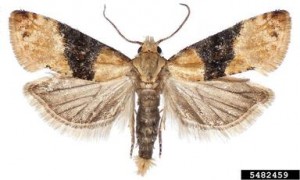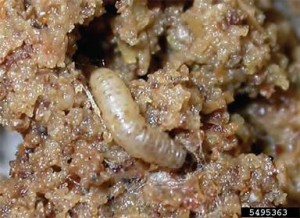Last week we announced that — now that we’re 30 — we’ve planned a whole different take on our Year in Review. For prepping for NYS IPM’s 30th anniversary takes looking back — back to times when IPM was a whole new ballgame for farmers statewide.
What are we finding? Take these “for instances”:
Our 1986 annual report shows that our first year out of the gate we tested and tweaked new, computer-based disease-forecasting systems for certain insect and disease pests of apples, grapes, onions, and tomatoes.

Those models are primitive compared to what we have today — but they offered a critically important launch pad. For instance: we demoed these models to snap bean growers in western New York, who saw how — given growing conditions that year — forecasting for white mold could eliminate 50% of fungicide treatments while onion growers could cut herbicide use by 47%.

Also that first year, we taught IPM in 17 counties, reaching and teaching 438 producers, 11 consultants, and 52 scouts how to use IPM. For instance: on Long Island, IPM potato farmers followed our recommendations and made 2.2 fewer pesticide applications.
Dairy and livestock are big in New York, and — (the last for instance in this post) our IPM cooperators in southwestern New York consistently combined higher yields with fewer inputs.
Productive from the get-go: that’s NYS IPM. Stay tuned for more from the annals.
Photo credits for adult and larval grape berry moths: Todd Gilligan and Marc Epstein, USDA APHIS.